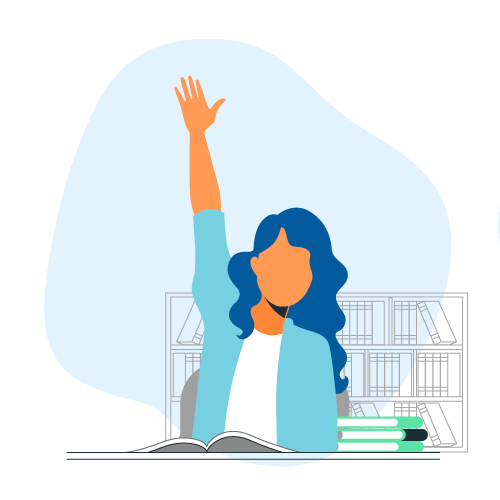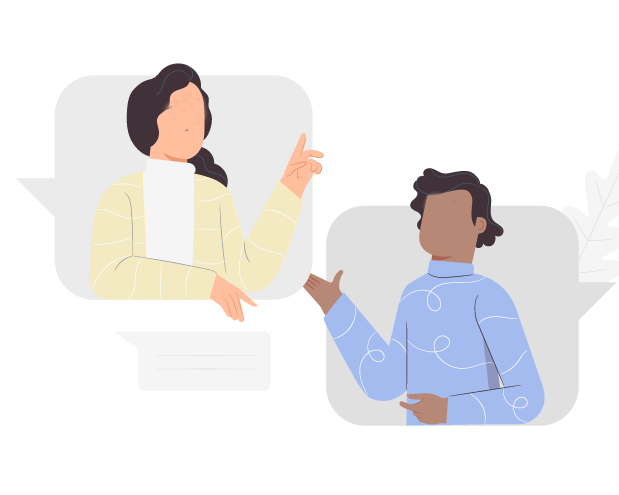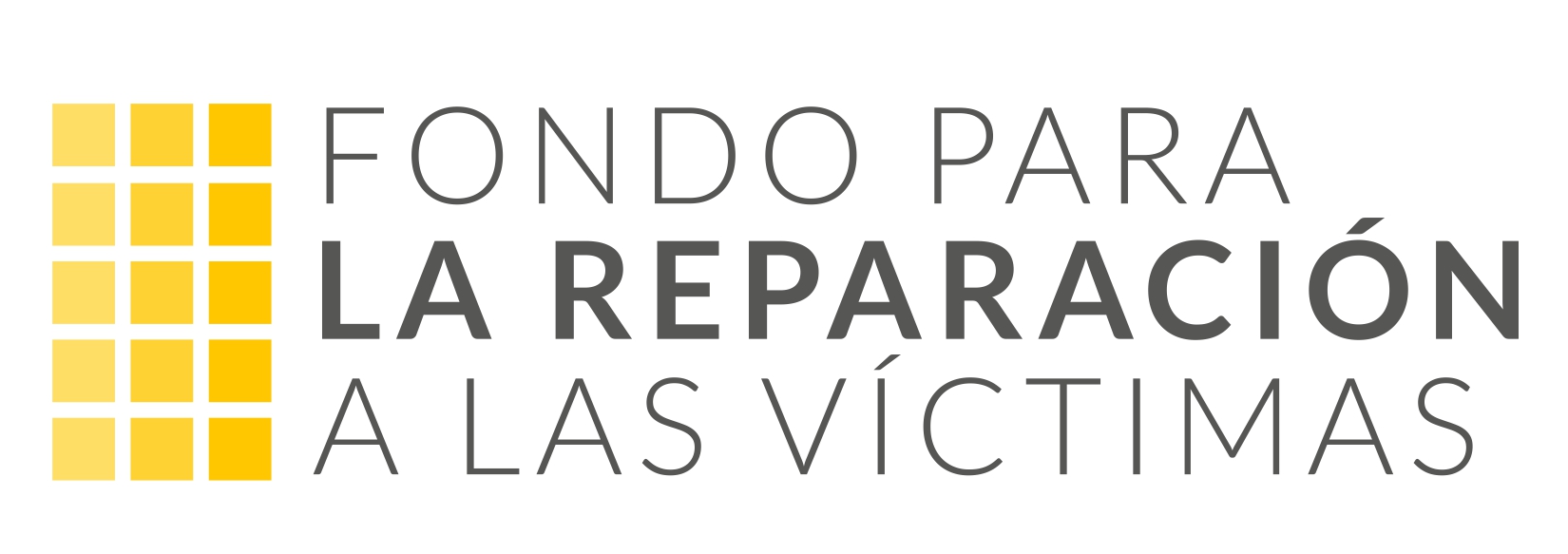La Unidad para la Atención y Reparación Integral a las Víctimas es una institución creada en enero de 2012 a partir de la Ley 1448 (sobre víctimas y restitución de tierras), por la cual se dictan medidas de atención, asistencia y reparación integral a las víctimas del conflicto armado interno.
La Unidad para las Víctimas busca el acercamiento del Estado a las víctimas mediante una coordinación eficiente y acciones transformadoras que promuevan la participación efectiva de las víctimas en su proceso de reparación. Se encarga de coordinar las medidas de asistencia, atención y reparación otorgadas por el Estado, como de articular a las entidades que hacen parte del Sistema Nacional para la Atención y Reparación Integral a las Víctimas (SNARIV).
Es una entidad del orden nacional con autonomía administrativa y patrimonial, que pertenece al sector de la inclusión social y la reconciliación liderado por el Departamento de la Prosperidad Social (DPS).
Líneas de acción de acuerdo con lo establecido en la normatividad vigente.
⇾ Estrategia Nuevos Mandatarios y Cierre de Gobiernos Locales
<ul/
Herramienta
Es una herramienta que ofrece la Unidad para las víctimas para dar a conocer los planes, programas, proyectos y acciones específicas brindadas por las entidades de orden nacional y territorial que hacen parte del Sistema SNARIV


Herramienta
En el mapa de oferta académica encuentrará información de los diferentes programas y beneficios que otorgan las instituciones de educación superior a víctimas del conflicto armado en el país a través de los diferentes escenarios de articulación de la mesa de educación superior liderada por la Unidad.
Herramienta
El mapa de atención a víctimas en el exterior facilita la visualización agregada por país de declaración y país de ubicación de las personas que han sufrido violaciones de derechos humanos debido al conflicto armado interno en Colombia y que han emigrado.


El FRV tiene 3 componentes misionales:
SNARIV es el Sistema Nacional de Atención y Reparación Integral a las Víctimas, está compuesto por diferentes entidades públicas nacionales y territoriales, al igual que por las mesas de participación efectiva de víctimas y organizaciones encargadas de realizar planes, programas y proyectos tendientes a la atención y reparación integral de las víctimas
De acuerdo a la Ley 1712 de 2014 y la Resolución 1519 de 2020, la UARIV pone a disposición de la ciudadanía, grupos de interés y de valor la nueva sección de Transparencia y Acceso a la Información Pública, donde podrán conocer de primera mano la información de la Unidad para las Víctimas.
Aquí encontrará información sobre los espacios, mecanismos y acciones que la Unidad para las Vítimas implementa en cumplimiento de la política de participación ciudadana en la gestión pública
Es un espacio que facilita el acceso y consulta de diferentes fuentes de información relacionado con La Unidad
Con tu aporte contribuyes a que, cientos de familias víctimas del conflicto armado mejoren su calidad de vida.
Carrera 85D No. 46A – 65
Complejo logístico San Cayetano
Conmutador: +57 (601) 7965150
Medellín:
Calle 49 No 50-21 piso 14
Edificio del Café
Horario:
8:00 a.m. – 12:00 m. y 2:00 p.m. – 4:00 p.m.
Código Postal: 050010
Correo institucional:
servicioalciudadano@unidadvictimas.gov.co
Notificaciones judiciales:
notificaciones.juridicauariv@unidadvictimas.gov.co
Horario de atención
Lunes a viernes 8:00 a.m. – 6:00 p.m.
Sábado: 8:00 a.m. – 12:00 m.
Puntos de Atención y Centros Regionales
Unidad en línea
Estado de cumplimiento
Creemos firmemente que Internet debe estar disponible y accesible para todos, y estamos comprometidos a proporcionar un sitio web que sea accesible para la audiencia más amplia posible, independientemente de las circunstancias y la capacidad.
Para cumplir con esto, nuestro objetivo es adherirnos lo más estrictamente posible a las Directrices de Accesibilidad al Contenido Web 2.1 (WCAG 2.1) del World Wide Web Consortium (W3C) en el nivel AA. Estas pautas explican cómo hacer que el contenido web sea accesible para personas con una amplia gama de discapacidades. Cumplir con esas pautas nos ayuda a garantizar que el sitio web sea accesible para todas las personas: personas ciegas, personas con discapacidad motora, discapacidad visual, discapacidad cognitiva y más.
Este sitio web utiliza varias tecnologías destinadas a hacerlo lo más accesible posible en todo momento. Utilizamos una interfaz de accesibilidad que permite a las personas con discapacidades específicas ajustar la interfaz de usuario (interfaz de usuario) del sitio web y diseñarla según sus necesidades personales.
Además, el sitio web utiliza una aplicación basada en IA que se ejecuta en segundo plano y optimiza constantemente su nivel de accesibilidad. Esta aplicación repara el HTML del sitio web, adapta su funcionalidad y comportamiento para los lectores de pantalla utilizados por los usuarios invidentes y para las funciones del teclado utilizadas por las personas con discapacidad motora.
Si ha encontrado un mal funcionamiento o tiene ideas para mejorar, estaremos encantados de saber de usted. Puede comunicarse con los operadores del sitio web utilizando el siguiente correo electrónico servicioalciudadano@unidadvictimas.gov.co
Lector de pantalla y navegación con teclado
Nuestro sitio web implementa la técnica de atributos ARIA (Accessible Rich Internet Applications), junto con varios cambios de comportamiento diferentes, para garantizar que los usuarios ciegos que visitan con lectores de pantalla puedan leer, comprender y disfrutar de las funciones del sitio web. Tan pronto como un usuario con un lector de pantalla ingresa a su sitio, inmediatamente recibe un aviso para ingresar al perfil de lector de pantalla para que pueda navegar y operar su sitio de manera efectiva. Así es como nuestro sitio web cubre algunos de los requisitos más importantes del lector de pantalla, junto con capturas de pantalla de consola de ejemplos de código:
Optimización del lector de pantalla: ejecutamos un proceso en segundo plano que aprende los componentes del sitio web de arriba a abajo, para garantizar el cumplimiento continuo incluso cuando se actualiza el sitio web. En este proceso, proporcionamos a los lectores de pantalla datos significativos utilizando el conjunto de atributos ARIA. Por ejemplo, proporcionamos etiquetas de formulario precisas; descripciones de íconos accionables (íconos de redes sociales, íconos de búsqueda, íconos de carrito, etc.); guía de validación para entradas de formulario; roles de elementos como botones, menús, diálogos modales (ventanas emergentes) y otros. Además, el proceso en segundo plano escanea todas las imágenes del sitio web y proporciona una descripción precisa y significativa basada en el reconocimiento de objetos de imagen como una etiqueta ALT (texto alternativo) para las imágenes que no se describen. También extraerá textos que están incrustados dentro de la imagen, utilizando una tecnología OCR (reconocimiento óptico de caracteres). Para activar los ajustes del lector de pantalla en cualquier momento, los usuarios solo necesitan presionar la combinación de teclado Alt+1. Los usuarios de lectores de pantalla también reciben anuncios automáticos para activar el modo de lector de pantalla tan pronto como ingresan al sitio web.
Estos ajustes son compatibles con todos los lectores de pantalla populares, incluidos JAWS y NVDA.
Optimización de la navegación con teclado: el proceso en segundo plano también ajusta el HTML del sitio web y agrega varios comportamientos mediante el uso de código JavaScript para que el sitio web funcione con el teclado. Esto incluye la capacidad de navegar por el sitio web usando las teclas Tab y Shift+Tab, operar menús desplegables con las teclas de flecha, cerrarlos con Esc, activar botones y enlaces usando la tecla Enter, navegar entre elementos de radio y casillas de verificación usando las teclas de flecha y completarlos con la barra espaciadora o la tecla Enter. Además, los usuarios del teclado encontrarán menús de navegación rápida y omisión de contenido, disponibles en cualquier momento haciendo clic en Alt+1, o como los primeros elementos del sitio mientras navegan con el teclado. El proceso en segundo plano también maneja las ventanas emergentes activadas moviendo el enfoque del teclado hacia ellas tan pronto como aparecen, y no permite que el enfoque se desvíe fuera de él.
Los usuarios también pueden usar accesos directos como "M" (menús), "H" (encabezados), "F" (formularios), "B" (botones) y "G" (gráficos) para saltar a elementos específicos.
Perfiles de discapacidad admitidos en nuestra web
Modo seguro para epilepsia: este perfil permite a las personas con epilepsia utilizar el sitio web de forma segura al eliminar el riesgo de convulsiones que resultan de las animaciones intermitentes o parpadeantes y las combinaciones de colores arriesgadas.
Modo para personas con problemas de visión: este modo ajusta el sitio web para la comodidad de los usuarios con problemas de la vista, como vista degradada, visión de túnel, cataratas, glaucoma y otros.
Modo de discapacidad cognitiva: este modo brinda diferentes opciones de asistencia para ayudar a los usuarios con deficiencias cognitivas, como dislexia, autismo, CVA y otras, a concentrarse en los elementos esenciales del sitio web con mayor facilidad.
Modo compatible con TDAH: este modo ayuda a los usuarios con TDAH y trastornos del neurodesarrollo a leer, navegar y concentrarse en los elementos principales del sitio web con mayor facilidad, al tiempo que reduce significativamente las distracciones.
Modo ciego: este modo configura el sitio web para que sea compatible con lectores de pantalla como JAWS, NVDA, VoiceOver y TalkBack. Un lector de pantalla es un software para usuarios ciegos que se instala en una computadora y un teléfono inteligente, y los sitios web deben ser compatibles con él.
Perfil de navegación del teclado (discapacidad motora): este perfil permite a las personas con discapacidad motora operar el sitio web utilizando las teclas Tabulador, Mayús+Tabulador y las teclas Intro del teclado. Los usuarios también pueden usar accesos directos como "M" (menús), "H" (encabezados), "F" (formularios), "B" (botones) y "G" (gráficos) para saltar a elementos específicos.
Ajustes adicionales de interfaz de usuario, diseño y legibilidad
Ajustes de fuente: los usuarios pueden aumentar y disminuir su tamaño, cambiar su familia (tipo), ajustar el espaciado, la alineación, la altura de la línea y más.
Ajustes de color: los usuarios pueden seleccionar varios perfiles de contraste de color, como claro, oscuro, invertido y monocromático. Además, los usuarios pueden intercambiar combinaciones de colores de títulos, textos y fondos, con más de 7 opciones de color diferentes.
Animaciones: los usuarios epilépticos pueden detener todas las animaciones en ejecución con solo hacer clic en un botón. Las animaciones controladas por la interfaz incluyen videos, GIF y transiciones intermitentes de CSS.
Resaltado de contenido: los usuarios pueden optar por enfatizar elementos importantes como enlaces y títulos. También pueden optar por resaltar solo los elementos enfocados o suspendidos.
Silenciamiento de audio: los usuarios con dispositivos auditivos pueden experimentar dolores de cabeza u otros problemas debido a la reproducción automática de audio. Esta opción permite a los usuarios silenciar todo el sitio web al instante.
Trastornos cognitivos: utilizamos un motor de búsqueda que está vinculado a Wikipedia y Wiktionary, lo que permite a las personas con trastornos cognitivos descifrar significados de frases, iniciales, jerga y otros.
Funciones adicionales: brindamos a los usuarios la opción de cambiar el color y el tamaño del cursor, usar un modo de impresión, habilitar un teclado virtual y muchas otras funciones.
Compatibilidad con el navegador y la tecnología de asistencia
Nuestro objetivo es admitir la gama más amplia posible de navegadores y tecnologías de asistencia, para que nuestros usuarios puedan elegir las herramientas que mejor se adapten a ellos, con la menor cantidad de limitaciones posible. Por lo tanto, hemos trabajado muy duro para poder admitir todos los sistemas principales que comprenden más del 95 % de la cuota de mercado de los usuarios, incluidos Google Chrome, Mozilla Firefox, Apple Safari, Opera y Microsoft Edge, JAWS y NVDA (lectores de pantalla), tanto para usuarios de Windows como de MAC.
Notas, comentarios y retroalimentación
A pesar de nuestros mejores esfuerzos para permitir que cualquier persona pueda ajustar el sitio web a sus necesidades, todavía puede haber páginas o secciones que no son completamente accesibles, están en proceso de hacerlo o carecen de una solución tecnológica adecuada para hacerlo accesible. Aún así, estamos mejorando continuamente nuestra accesibilidad, agregando, actualizando y mejorando sus opciones y funciones, y desarrollando y adoptando nuevas tecnologías. Todo ello para alcanzar el nivel óptimo de accesibilidad, siguiendo los avances tecnológicos. Para obtener ayuda, comuníquese con servicioalciudadano@unidadvictimas.gov.co